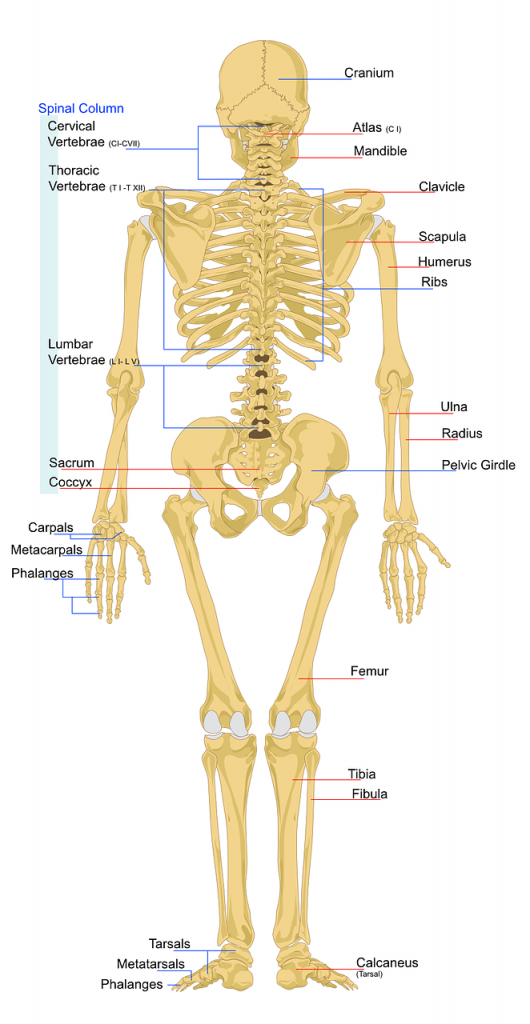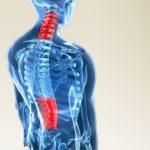A Patient’s Guide to Cervical Spinal Stenosis
Spinal stenosis refers to the narrowing of the spinal canal, a structure housing the spinal cord and its nerve branches. The cervical spine describes the upper area of the spine, consisting of 7 bones called vertebrae that form the neck. Over time, the discs in the spine that separate and cushion vertebrae may gradually dry out and herniate (bulge out of place). As the discs lose height and bulge, the space between the vertebrae shrinks, and the spinal canal narrows. This narrowing of the spinal canal is called spinal stenosis and it results in the compression of the nerves.
Narrowing of the central part of the spinal canal causes compression of the spinal cord and narrowing where the nerve branches leave the spine causes compression on the individual nerve roots. When a pinched nerve appears in the cervical spine, it can cause pain, stiffness, numbness, or weakness in the neck, arms, and legs.
What Causes Cervical Spinal Stenosis?
Cervical spinal stenosis can be congenital (from birth) but is usually acquired through age-related spinal degeneration (wear and tear). Thus, cervical spinal stenosis becomes more prevalent in people above 50 years of age.
 A disc herniating out of place and traumatic injuries, such as a car crash or a fall, can also contribute to compression in the spinal canal. Other factors, such as age, poor posture, and repeated trauma can further contribute to cervical spine degeneration.
A disc herniating out of place and traumatic injuries, such as a car crash or a fall, can also contribute to compression in the spinal canal. Other factors, such as age, poor posture, and repeated trauma can further contribute to cervical spine degeneration.
What are the Symptoms of Cervical Spinal Stenosis?
Many patients with cervical spinal stenosis may not initially exhibit any symptoms. Cervical stenosis only causes symptoms if the nerve roots or spinal cord become compressed to the point impaired bodily function. When symptoms do manifest, they frequently intensify over time. Patients may notice a combination of symptoms ranging from:
- Stiffness, pain, or numbness in the neck, shoulders, arms, hands, or legs
- Burning/aching pain that radiates down the extremities
- Balance, coordination, and mobility issues, such as leg stiffness
- Muscle Spasms
- Incontinence (loss of bladder or bowel control)
If you begin exhibiting symptoms of cervical spinal stenosis, schedule an appointment with a board-certified spine specialist. After receiving an accurate diagnosis, your orthopedic spine surgeon can recommend the appropriate treatment plan for optimal recovery.
What Happens When Cervical Spinal Stenosis Goes Untreated?
Cervical spinal stenosis can significantly impact your quality of life and the symptoms often worsen when left untreated. Failing to treat cervical spinal stenosis can result in severe discomfort and can interfere with your ability to complete everyday tasks. The length of time that a nerve is compressed affects its ability to fully recover so it is important to meet with a doctor as soon as you develop symptoms.
If you experience numbness or weakness in your arms or legs, you may need medical intervention from a board-certified spine surgeon. During a physical examination, your orthopedic spine doctor will review your medical history, and test muscle strength, reflexes, and sensation. Depending on the severity of your symptoms and physical findings, your doctor may order various imaging tests such as X-rays, CT scans, and MRI scans to pinpoint nerve compression.
What is the Best Treatment for Cervical Spinal Stenosis?
Treatment for cervical spinal stenosis may include a combination of non-surgical and surgical options. Most treatment regimens for cervical stenosis begin with non-surgical approaches. This typically includes physical therapy and behavior modification to improve your posture and core muscle strength.
Your spine doctor may prescribe medications including non-steroidal anti-inflammatories or muscle relaxants. In some situations, intervention pain management procedures such as epidural steroid injections may be appropriate. If these conservative measures prove unsuccessful or there are signs of a serious spinal cord injury, surgery may become necessary.
Surgical Treatment for Cervical Spinal Stenosis
For patients with more advanced cases of cervical spinal stenosis, surgery can prevent further spinal cord or nerve root damage and give you the best chance for recovery. The common surgical techniques to help treat cervical stenosis include:
- Laminectomy (decompression surgery) removes a part of the bone or lamina causing pressure on the spinal cord.
- Laminoplasty is similar to laminectomy; but instead of removing the lamina, it is hinged open to expand the size of the spinal canal and release the pressure over the spinal cord and nerve roots.
- Foraminotomy relieves pressure on individual compressed nerves by cleaning out the passageways that nerves use to exit the spinal column
- Discectomy involves the removal of the intervertebral disc to relieve pressure on the nerves. A disc replacement device or a bone graft then fill the remaining empty space between the vertebrae.
- Spinal Fusion Surgery sometimes becomes a necessary addition to the above decompressive procedures to best relieve the pressure on the spinal cord or nerve roots. Spinal fusion is a procedure that permanently joins two vertebrae together to stabilize the spine and prevent painful movement.
Your board-certified orthopedic spine surgeon will discuss the available surgical options, as well as the associated risks and benefits, before recommending the most appropriate procedure for your case.
Cervical Spinal Stenosis Treatment at NJSS
With offices in Summit and Montclair, the team at New Jersey Spine Specialists uses state-of-the-art technology and minimally invasive techniques to most effectively treat cervical stenosis, as well as a wide range of associated spine conditions including bulging discs, sciatica, and degenerative disc disease. All of our surgeons are board-certified medical doctors who have completed fellowship training in addition to their Orthopedic Residency.
Whether you experience brief or chronic neck or back pain, the compassionate doctors at New Jersey Spine Specialists have the expertise necessary to treat cervical stenosis, mitigate painful symptoms, and help you return to your normal active life. To learn more about the treatment options for cervical stenosis, contact our office today by dialing 908 608-9619.
Source(s)
*Mayo Clinic: https://www.mayoclinic.org/diseases-conditions/spinal-stenosis/symptoms-causes/syc-20352961
*Michigan Medicine: https://www.uofmhealth.org/health-library/uh2003spec









